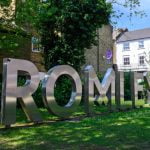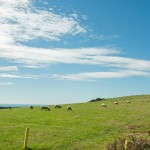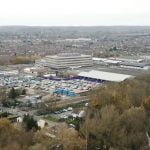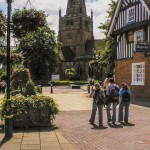
A quick guide to Lewisham!
Overview
Lewisham is an inner borough of London that extends southwards from the River Thames, immediately opposite the Isle of Dogs. It also adjoins the boroughs of Southwark (west), Greenwich (east), and Bromley (south). Lewisham includes the districts and historic villages of Deptford, New Cross, Blackheath, Brockley, Lewisham, Lee, Ladywell, Rushey Green, Forest Hill, Hither Green, Catford, Grove Park, Upper Sydenham, Bellingham, Southend, and Sydenham. The present borough was established in 1965 by the merger of the metropolitan boroughs of Lewisham and Deptford, which has an area of around 35 km2. The population of the London Borough of Lewisham was recorded as 275,885 at 2011 UK Census.
A Very Brief History
The first record of the place-name Lewisham dates from AD 862. During the Middle Ages, the manor of Lewisham belonged to the Abbey of Ghent. In 1086, at the time of the Domesday Book, there were at least half a dozen mills in Lewisham Village, which would produce weaponry, tan leather, and grind corn.
During the 17th and 18th centuries, Lewisham became a fashionable residence, as the well-to-do began to exodus squalid Central London in favour of the suburbs. In 1848, the first railway was built through Lewisham, the North Kent line to Dartford. In 1857, the present station opened when the Mid Kent line was added. With the construction of suburban railways, the mansions and rural estates were gradually replaced by housing for the middle-classes and commercial enterprise. By the end of the century, Lewisham was mainly home to lower-middle and working-class families. By this time there were a number of large shops in the town centre and trams, trains and buses would ferry shoppers into Lewisham from all parts of London. In 1900, the Clock Tower was completed, which had been commissioned to celebrate the 1897 Diamond Jubilee of Queen Victoria. In 1932, the Broadway Theatre opened in Catford.
During WW2, the town centre was devastated by a V2 flying bomb, an incident it didn’t fully recover from until the late 1950s. In the 1960s, the former Royal Victoria Victualling Yard at Deptford was redeveloped to accommodate housing. In 1977, the Borough’s first major shopping centre was built in Lewisham village. And in 1994, the High Street in the town centre was pedestrianised to create a traffic-free street market and an open space. In 1999, the Docklands Light Railway extension from the Isle of Dogs was completed.
Today, public open spaces in Lewisham, include the grounds of the Horniman Museum, Beckenham Place Park, Black Heath, Ladywell Fields, and Deptford Park. There are various light industries and engineering firms located throughout the borough, especially along the valley of the River Ravensbourne. The area has a well-developed road, rail, and underground rail (subway) systems. Ethnic minorities, mainly Afro-Caribbeans, make up nearly one-third of the population.
Did you know?
Not a lot of people know that – opening in the High Street in 2004, Lewisham is home to Europe’s largest police station – it’s approximately 10,000m2!
Perhaps the most notorious, and ultimately most tragic, punk rocker of them all – the Sex’s Pistol’s Sid Vicious, was born in Lewisham in May 1957.
Getting Around!
It’s generally recommended not to drive in Central London as it’s far easier to get around on the train or bus. You find the following railway stations situated with the Borough of Lewisham:
Railway stations:
Beckenham Hill
Bellingham
Blackheath
Brockley
Catford
Catford Bridge
Crofton Park
Deptford
Forest Hill
Grove Park
Hither Green
Honor Oak Park
Ladywell
Lee
Lewisham
Lower Sydenham
New Cross
New Cross Gate
St Johns
Sydenham
Docklands Light Railway (DLR) stations:
Deptford Bridge
Elverson Road
Lewisham

Lewisham DLR Station
Tube (Underground) stations:
There are no Tube stations in the borough of Lewisham.
Buses:
There are numerous bus routes in and around Lewisham that will take you to all parts of London. The two main operators are Stagecoach and London Central.
Things to see and do!
Some of the top tourist attractions in and around Lewisham are:
The Ranger’s House, Wernher Collection – (English Heritage) Chesterfield Walk
Royal Observatory, Greenwich – Greenwich Park, Blackheath Avenue
The Fan Museum – 12 Crooms Hill, Greenwich
The Anchor Statue – Junction of A2/Deptford High Street
National Maritime Museum – Park Row, Greenwich
Cutty Sark – King William Walk, Greenwich
Old Royal Naval College – King William Walk
Nunhead Cemetery – Linden Grove

The Royal Observatory – Greenwich
Where to stay?
If you’re on a budget there are some offerings of hostel style accommodation in or close to Lewisham. There’s plenty of B & B/Guesthouse/Basic Hotel accommodation. If you’re looking for a bit more luxury then there’s also plenty 3, 4 and 5-star hotels in the area. An alternative would be to rent an apartment – most have no minimum let period. While the majority of apartments cater to couples, some can accommodate up to 6 people. Indicative prices for the most readily available types of accommodation/per night, based on 2 adults sharing are as follows:
Hostel: £50 – 40
B & B/Guesthouse/Basic Hotel: £50 – £90
3/4/5 star Hotel: £150 – £350
Apartments vary greatly based on no. of available berths, location and standard





